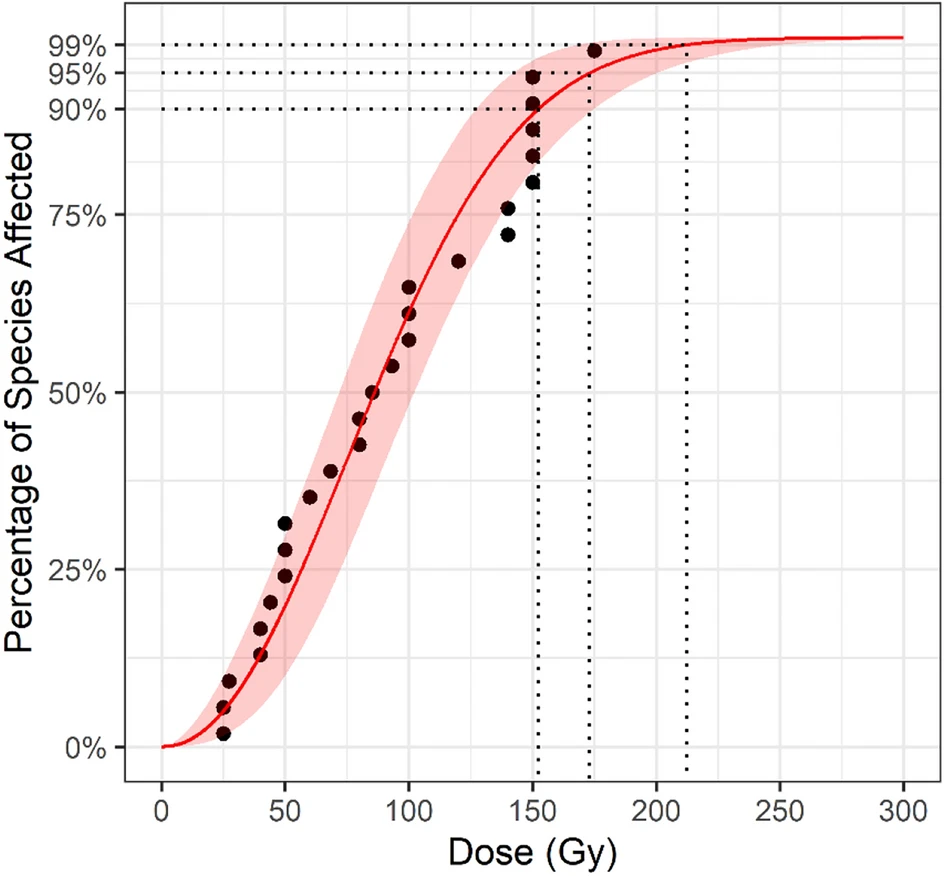
Important publication on species radiosensitivity distribution for PI
On February 9, 2023, Scientific Reports published on line an article of Cory Penca, Andrea L. Beam and Woodward D. Bailey of the USDA-APHIS-PPQ-S&T Treatment and Inspection Methods Laboratory in Miami, Florida, USA. The article is an important contribution towards the development of more generic doses which will support the growth of phytosanitary irradiation.
Generic doses allow using a single dose for an entire taxa for which a dose has been approved, also to untested species. Therefore they allow an increase in the number of pest-commodity combinations that can be irradiated. Establishing generic doses requires a lot of time and resources to gather the necessary data. The article proposes to supplement the traditional approach with the Species Sensitivity Distribution (SSD) framework, an approach that has been successfully used in ecotoxicology and environmental risk assessment. Using existing data for Cucurlionidae and Tephritidae parametric SSDs for Curculionidae and Tephritidae support the existing 150 Gy generic dose for Tephritidae and a proposed 175 Gy generic dose for Curculionidae.
The quantitative estimates of risk produced by the SSD approach can be a valuable tool for phytosanitary rule making, improving the process for generic dose development and approval. Importantly, the article provides recommendations for future phytosanitary irradiation research that accommodates and incorporates the use of the SSD approach to generic dose setting for phytosanitary treatments.
Article reference
Penca, C., Beam, A.L. & Bailey, W.D.
The applicability of species sensitivity distributions to the development of generic doses for phytosanitary irradiation.
Sci Rep 13, 2358 (2023). https://doi.org/10.1038/s41598-023-29492-1
Link: https://www.nature.com/articles/s41598-023-29492-1
Scientific Reports is an open access journal publishing original research from across all areas of the natural sciences, psychology, medicine and engineering. Scientific Reports is the 5th most-cited journal in the world.
Image: SSD Curve for Curculionidae fitted to the Weibull distribution with the shaded area covering the 5–95% confidence interval (from the article)

